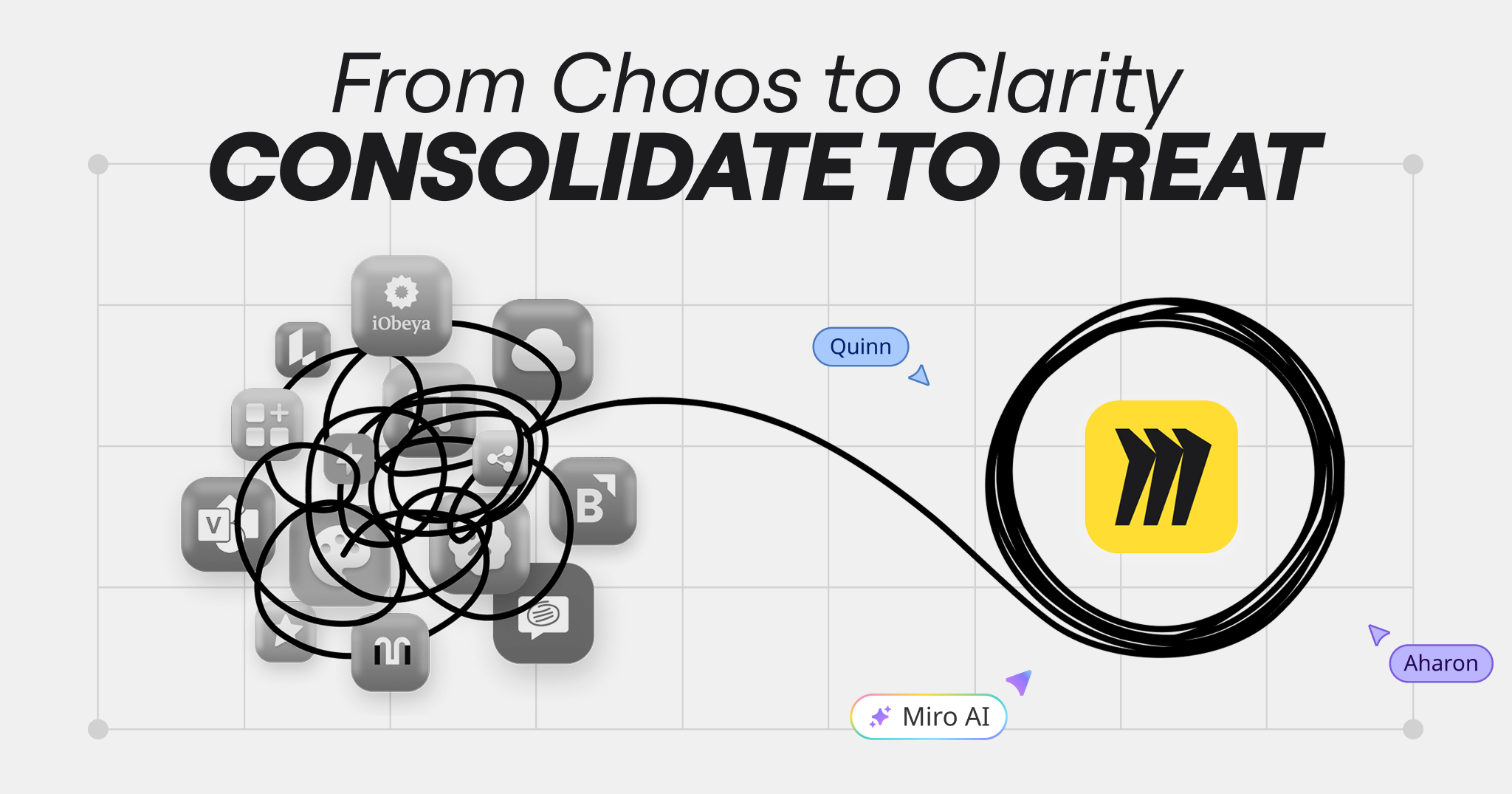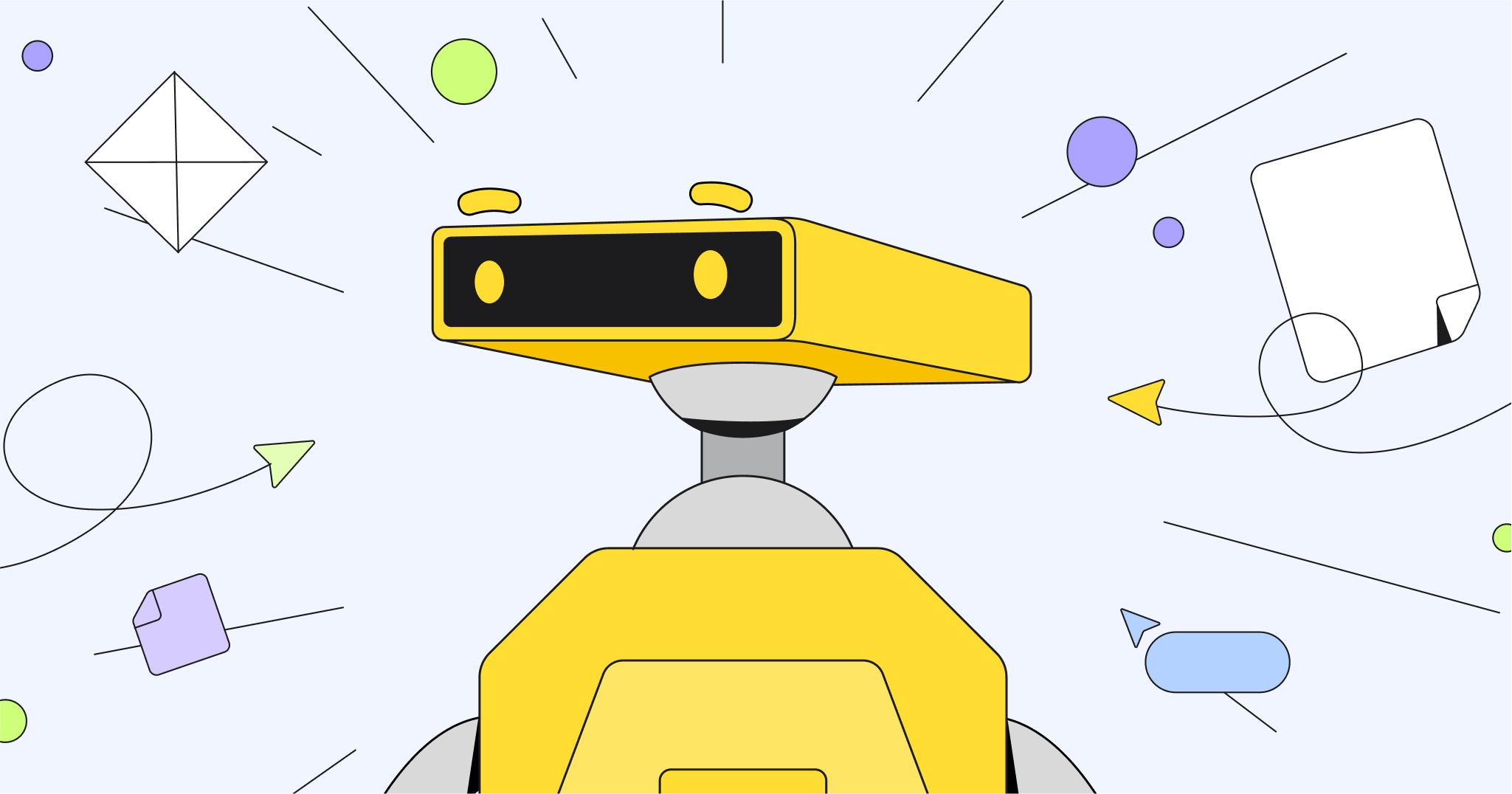There are so many adjectives you want your team to be. Innovative. Creative. Energetic. Enthusiastic. Supportive. Collaborative. Bold.
But getting there? That’s the hard part – especially if your existing team meetings and brainstorming sessions are filled mostly with awkward pauses, shifty eye contact, and the same few people who are the only ones comfortable enough to chime in.
The good news is there’s a technique you can use to shake up your team, supercharge creativity, and make everybody feel safe to contribute: improv.
What exactly is improv?
Improv is short for improvisation or improvisational comedy, a style of live performance when the bulk of the show is largely unplanned. There might be a few constraints or themes, but the performers rely on each other and suggestions from the audience to move their skits and scenes forward.
“Improv in general is a lot about changing and pivoting and throwing new ideas out there,” explains Rachel Davis, a workshop experience designer and facilitator who, along with Jon White, leads the popular Miro board improv sessions.
In improv, you aren’t sticking with a rigid agenda or a firm set of rules. Instead, it’s all about seeing what comes up and then going with the flow. And while you and your team likely aren’t doing comedy sketches during your workday, those are concepts that you can apply to your other meetings and workflows.
Why is improv helpful for teams?
Improvisation sounds like a pretty drastic departure from the, “Create an agenda, have a plan, and manage the conversation!” philosophy that’s applied to most modern meetings. However, learning and embracing the elements of improv offers a lot of notable benefits for teams.
1. Boost psychological safety
One of the tenets of improv is that there are no bad ideas – and, most times, you have to try to use everything that’s contributed.
That collaborative and supportive approach is crucial for creating a psychologically-safe environment, where people feel comfortable speaking up, taking risks, and making mistakes without the fear of judgment or punishment.
2. Increase camaraderie
While improv might be a little nerve-racking, it’s also fun. And even if people are a little uneasy about a less-structured approach, they’re all in it together – they’re united in their discomfort.
Plus, implementing some improv techniques gives everybody a chance to play a part and feel like a valued and active player on the team.
“Everyone’s going to do it at the same time,” says Jon White, a Miro experience designer and facilitator who co-leads the Miro board improv sessions with Rachel Davis. “We all have equal opportunity to contribute and there’s not that loudest voice dominating the room.”
3. Shake off perfectionism
Rachel says that using improv in her sessions has been especially helpful for getting over her own perfectionist tendencies and letting things happen.
Now, Rachel and Jon let all of their improv session participants contribute to the board, without being so hung up on how it looks or any unexpected additions that crop up. “We not only make mistakes ourselves, but our audience makes mistakes. We just roll with it. There’s no big to-do,” adds Jon.
4. Encourage creativity and innovation
Improv prevents overthinking, defers judgment, and challenges people to build on other ideas – rather than tearing them down.
As you might expect, that can really light a fire under any team’s level of innovation and out-of-the-box thinking. One study followed people through improv lessons. After only six weeks of lessons, the study found that the improv participants exhibited far more creativity.
5. Improve listening
“A lot of improv is listening to understand,” Rachel says. In order to build upon someone’s suggestion, you need to fully comprehend what they shared with you.
Using an improv exercise or incorporating some elements of improv into your team meetings can help people practice active listening – rather than planning what they want to say next.
It’s astounding that something as seemingly innocuous and lighthearted as improv could make such a meaningful difference on teams, but you’ll likely be surprised.
“In my academic research, I’ve looked at many different types of teams, at a wide variety of organizations all over the world,” writes behavioral scientist, Francesca Gino, in an article for Harvard Business Review. “The group that communicated best, with everyone contributing and learning, wasn’t in a corporate office park; it was in an improv comedy class.”
In my academic research, I’ve looked at many different types of teams… The group that communicated best, with everyone contributing and learning, wasn’t in a corporate office park; it was in an improv comedy class.
Francesca Gino, Behavioral Scientist
How to use improv on your team: 3 steps to get started
Improv offers a lot of advantages, but it also might not feel like the most natural thing to implement on your team – particularly if you’re all used to a lot of detailed plans and firm expectations.
The best place to incorporate improv techniques is in your meetings, whether it’s a weekly team meeting, a brainstorming session, a project kickoff, or any other collaborative conversation.
And you don’t need to all be in the same space to make this work either. You can use improv whether you’re meeting in-person, remotely, or with a hybrid approach. Here’s how.
1. Explain the purpose of improv
Like anything new you’d introduce to your team, it’s important to provide some context. People are far more likely to buy-in if they understand what change is happening and why.
So before introducing any sort of lively game or new meeting norm, take some time to explain what improv is, how you’re planning to use it, and what benefits it offers the group.
Don’t feel like you need to get super detailed here. Even some broad strokes will prepare your team members and ensure they don’t feel blindsided when you introduce a new activity or institute a new practice.
2. Start with an improv game or exercise
One of the best ways to understand how improv works is to simply try it. And while that might seem intimidating, remember (and remind everyone else too!) that there aren’t any mistakes in improv – you literally can’t screw up.
Pick a low-pressure activity or exercise that you and your team can do to start your next meeting. Not only is it an energetic and lighthearted way to kick things off, but it also gets people more familiar with the concept of improv and how it typically works.
Here are a few popular improv activities and exercises you can use to get started with your own team:
- One-word story: Sit in a circle or assign an order to your team members. The first person says one word, the next person adds another word, and so on. The goal is to build off of the word before them and tell a coherent story.
- Last word, first word: Similar to the above, this game challenges team members to build on what was said before them. They need to use the last word the person before them said as the first word of their own contribution.
- Fortunately, unfortunately: Like the other exercises, this game is focused on taking turns telling one cohesive story. You start with one line that sets up your story. Then, the first person needs to start their line with, “fortunately.” The next person has to start with “unfortunately” and the next person starts with “fortunately.” You get it. You continue flipping back and forth between those until the story reaches a natural ending.
That’s only the tip of the iceberg on all of the activities you could do as a team. But they’re enough to show you how even the simplest improv exercises help you team loosen up, actively listen, and build off of each other.
3. Borrow improv techniques
Improv offers plenty of fast-paced challenges and gut-busting exercises, but your team probably doesn’t have the time and resources to fill all of your meetings with fun and games.
That’s not the only way to reap the benefits of improv. Once you and your team have a better understanding of the core principles of improv, you can weave those into your “normal” team meetings – without having to play any sort of game.
Here are a few suggestions for other ways that you can lean on improv in an effective, albeit less direct, way:
- Pick a leader: At the start of a meeting, randomly pick a team member to lead the entire meeting. They’re the one who has to steer the conversation, monitor the agenda, and segue between topics. It’s a great way to keep people on their toes and give everybody a chance to take a leadership role.
- Use “yes, and…”: Institute a rule that if someone is going to add on to an idea, they need to say, “Yes, and…” instead of, “Yes, but…” It’s a rule-of-thumb of improv that emphasizes building on others ideas, and it’s one you can easily implement on your team.
- Ask less questions: If you ever attend an improv comedy show, you’ll notice that they make statements (“Name an animal!”) rather than asking questions (“What’s an animal?”). It’s a subtle language difference, but it’s super helpful for providing clarity. Plus, avoiding questions makes people feel less pressured to respond with the “right” answer – they can simply add on to what you stated.
- Practice listening: When you’re brainstorming ideas or debating a decision, challenge everybody to start their own contribution with the previous person’s last thought. It’s an adjustment on the “last word, first word” game that you can use to host more productive, welcoming, and collaborative conversations.
Thinking on your feet can get you ahead
When you want your team to perform at their top level – collaborating seamlessly, communicating efficiently, and unabashedly sharing their big ideas – it’s tempting to think that you need to provide more structure and direction.
However, letting things happen and encouraging your team to go with the flow can be the secret to unlocking teamwork and creativity. Using improv, whether you do an actual exercise or borrow a few best practices, can be the outlet your team needs to loosen up and be a little more spontaneous.After all, sometimes your best ideas and your biggest aha moments can’t be planned and rehearsed — they just happen.
LOOKING FOR MORE WAYS TO CONNECT WITH YOUR TEAM? BROWSE TEAM BUILDING TEMPLATES.





